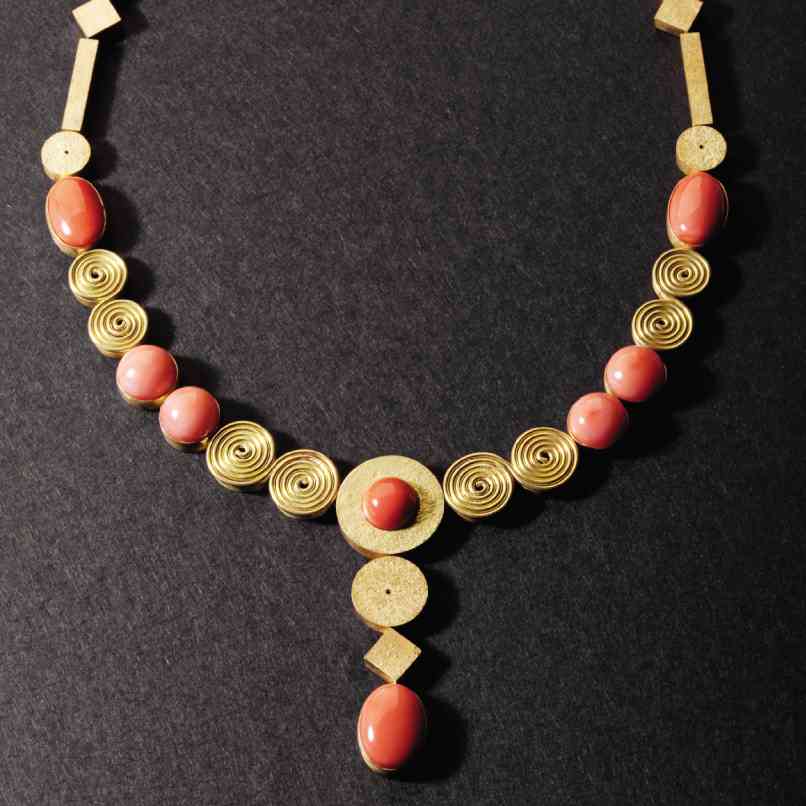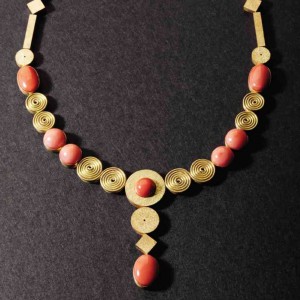
Jeweler Hans Brumann has an idiosyncratic approach to jewelry, treating it both as an accessory and an art.
He renews his collaboration with National Artist Arturo Luz and sculptor Imelda “Impy” Pilapil in the forthcoming exhibit at Makati Shangri-La, “Elegance and Grace.” A few years ago, the trio held an exhibit at the same venue which was a critical and commercial success.
The term “wearable art” has become in vogue when defining jewelry with sculptural qualities or intricate craftsmanship. In the past, artists had made their forays into jewelry. American sculptor Alexander Calder, progenitor of the kinetic sculpture or the mobile, produced jewelry using brass, steel, ceramic, wood and glass that were linked with loops.
Surrealist Salvador Dali utilized gold and precious stones that were shaped into parts of the face, nature forms and crucifixes. They were not only made for aesthetics, but also to inspire and capture the imagination. Pablo Picasso’s most important piece of jewelry was the “Satyr” pendant, a motif found in many of his works.
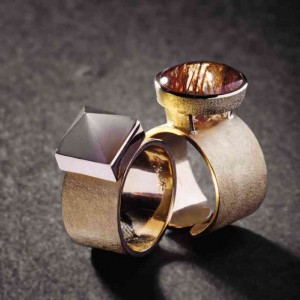
ASPILLERA
In Brumann’s latest collection, the artists’ signature styles are the main attraction.
“Jewelry becomes art when the distinction between form and function is easily traversed,” Pilapil said. “For example, all my pieces can be transformed into free-standing sculptures.”
Rolling waves
Pilapil’s rings and earrings bear her signature style. If her undulating glass sculptures are accentuated with attached objects, be they marble or a faceted glass block, the rings and earrings echo those graceful curves that end with a brilliant cut diamond. Like her sculptures, the jewelry pieces also suggest gentle rolling waves that reflect the sunlight.
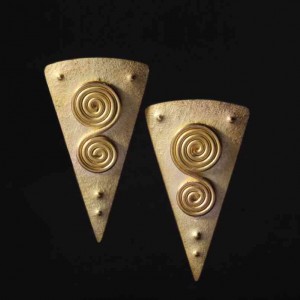
“There is this gentle ocean wave eternally moving and spinning shapes in my head, and all the time I treat them as ‘nature’ being a part of me,” she said. “This works hand in hand with my endless fascination with nature’s flora and fauna.”
Followers of Pilapil will recognize the large wooden floral installations in her “Bloom” exhibit, the artist’s statement on the rhythms of life and nature and their relationship with the spirit. One of the pieces was a triptych that depicted a flower with a spadix or a long stem, its mouth in various stages of growth.
“When I was making the ‘Gestures of Life’ triptych that was part of the ‘Bloom’ exhibit in 2010, I saw the works as handsome pieces of jewelry,” she said. “Hans and I met for lunch one time, and I showed him the catalogue. Having an exceptional eye for jewelry, he saw its potential.”
Brumann translated the huge, heavy wooden artworks into a dainty set of a ring and earrings in platinum and yellow gold. The signature spadixes in the Bloom collection shine with brilliant cut diamonds.
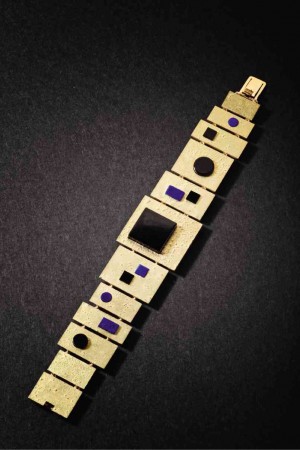
The Swiss jeweler, who has made the Philippines his home, stays true to Pilapil’s aesthetics that are suggestive of movement and life.
Citing a pair of sinewy dangling earrings, Brumann said, “Like her sculptures, the lines of these earrings are fluid and they are light and airy to wear.” His favorite work is a set of gold earrings that look like rolling waves. He applied to it a sandpaper finish, endowing it with understated elegance.
An homage to the ocean, a pair of earrings resembles sea grapes or lato, made of 18-karat white-gold branches tipped with tsavorites and diamonds.
The only bangle among Pilapil’s pieces is made of Philippine ebony, a trademark material in Brumann’s designs. She added a third dimension to the bangle with golden swirls.
To Pilapil, who has been using marble, glass, stone, wood and paper, the use of precious metal and stones takes her art to a different level.
Jewelry allows the holder to travel with the artwork anytime and anywhere he or she chooses,” she said. “Since it is meant to be worn on the human body, there’s the ergonomic aspect to be considered—not just the concept or what is aesthetic.” She added that during the last exhibit with Brumann, she was happy to see her designs “worn by discerning people.”
Strict geometry
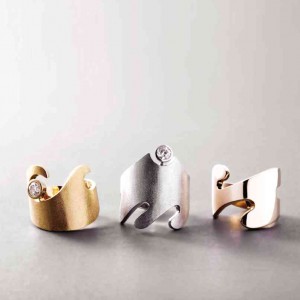
While Pilapil’s designs are sinuous, Luz’s pieces adhere to his trademark geometry and restrained color palette. He pays tribute to the jewelry of the early Greeks and Romans, who utilized simple designs and whose workmanship distinguished them from the flamboyant styles of other cultures.
But the earrings hark back to the coil and cone patterns and the granulation techniques of ancient Mesopotamia.
Luz limited the adornments to the royal stones in ancient times—carnelian, coral, onyx, lapis lazuli and moonstone.
“I find the moonstone quiet and unobtrusive,” said the National Artist.
Brumann said the textured gold ring with the pyramidal moonstone is one of Luz’s most powerful pieces for its stark simplicity.
The jeweler added that some of the rings are fused to create an organic look, as in the jewelry in ancient times. The bracelets and neckpieces are assemblages of basic circles, squares and rectangles.
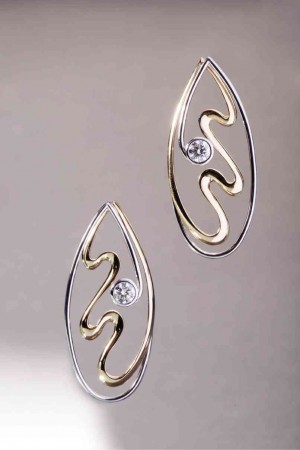
Prolific at 87, Luz has maintained his strict geometry and minimalism throughout a career that spans over six decades. “That’s my nature. I’m an architect and I want everything to be clean and linear,” he said.
Since Luz has a workshop for his sculptures in Laguna, he spared Brumann the guesswork by sending him brass prototypes of his designs.
In the end, it takes a special jeweler to interpret the artists’ vision. “Hans Brumann is a highly respected international jeweler,” said Pilapil. “He has survived trends through constant innovation while consciously maintaining a high standard of craftsmanship and quality.”
Luz agreed: “He is a superb technician and he has passed on his craft to his people. Others pale in comparison to his work.”
The exhibit will open 6:30 p.m. on Thursday at Hans Brumann, lobby level, Makati Shangri-La.

